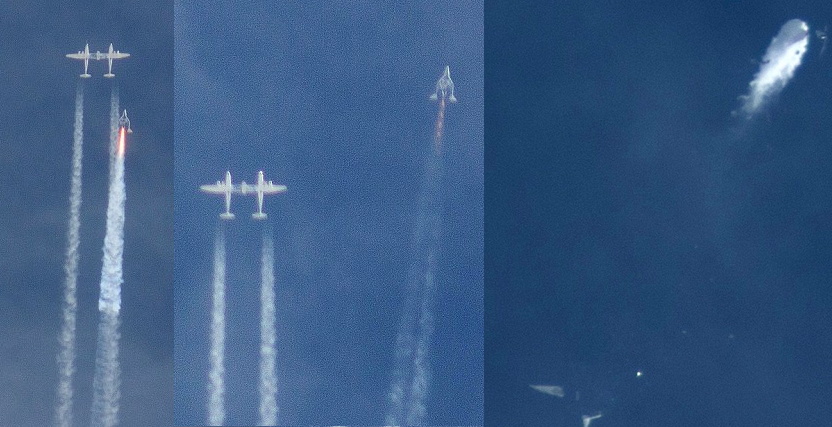- Joined
- Jan 17, 2009
- Messages
- 5,204
- Reaction score
- 1,547
Space Ship Two has crashed on a test flight. Seems like the hybrid motor had a destructive failure a few seconds after ignition. Apparently at least one, if not both, of the tailbooms were blown off.
One pilot got out and got his chute open. The other apparently could not get out before the main fuselage hit (has a side hatch, no ejection seats. Major problem trying to get out of a spinning/tumbling aircraft).
https://www.nbcnews.com/storyline/v...spaceshiptwo-crashes-1-dead-1-injured-n238376
Update - I have heard a first-hand eyewitness story on Space.com by an aerospace pro which indicates that both pilots got out, he got to the location where the deceased pilot landed. But the pilot who died was still in his seat. If true, that he was in a seat, rather than being an issue of getting out of the fuselage, the cockpit area may have broken off or broken up, since there's no ejection seats, and no way to get out of the side hatch while buckled into a seat. That eyewitness account of what he saw on the ground could also imply why the surviving pilot has such serious injuries (I'm glossing over a non-vehicle related piece of info that is better off not mentioned in detail).
- George Gassaway
One pilot got out and got his chute open. The other apparently could not get out before the main fuselage hit (has a side hatch, no ejection seats. Major problem trying to get out of a spinning/tumbling aircraft).
https://www.nbcnews.com/storyline/v...spaceshiptwo-crashes-1-dead-1-injured-n238376
Update - I have heard a first-hand eyewitness story on Space.com by an aerospace pro which indicates that both pilots got out, he got to the location where the deceased pilot landed. But the pilot who died was still in his seat. If true, that he was in a seat, rather than being an issue of getting out of the fuselage, the cockpit area may have broken off or broken up, since there's no ejection seats, and no way to get out of the side hatch while buckled into a seat. That eyewitness account of what he saw on the ground could also imply why the surviving pilot has such serious injuries (I'm glossing over a non-vehicle related piece of info that is better off not mentioned in detail).
- George Gassaway
Last edited:





